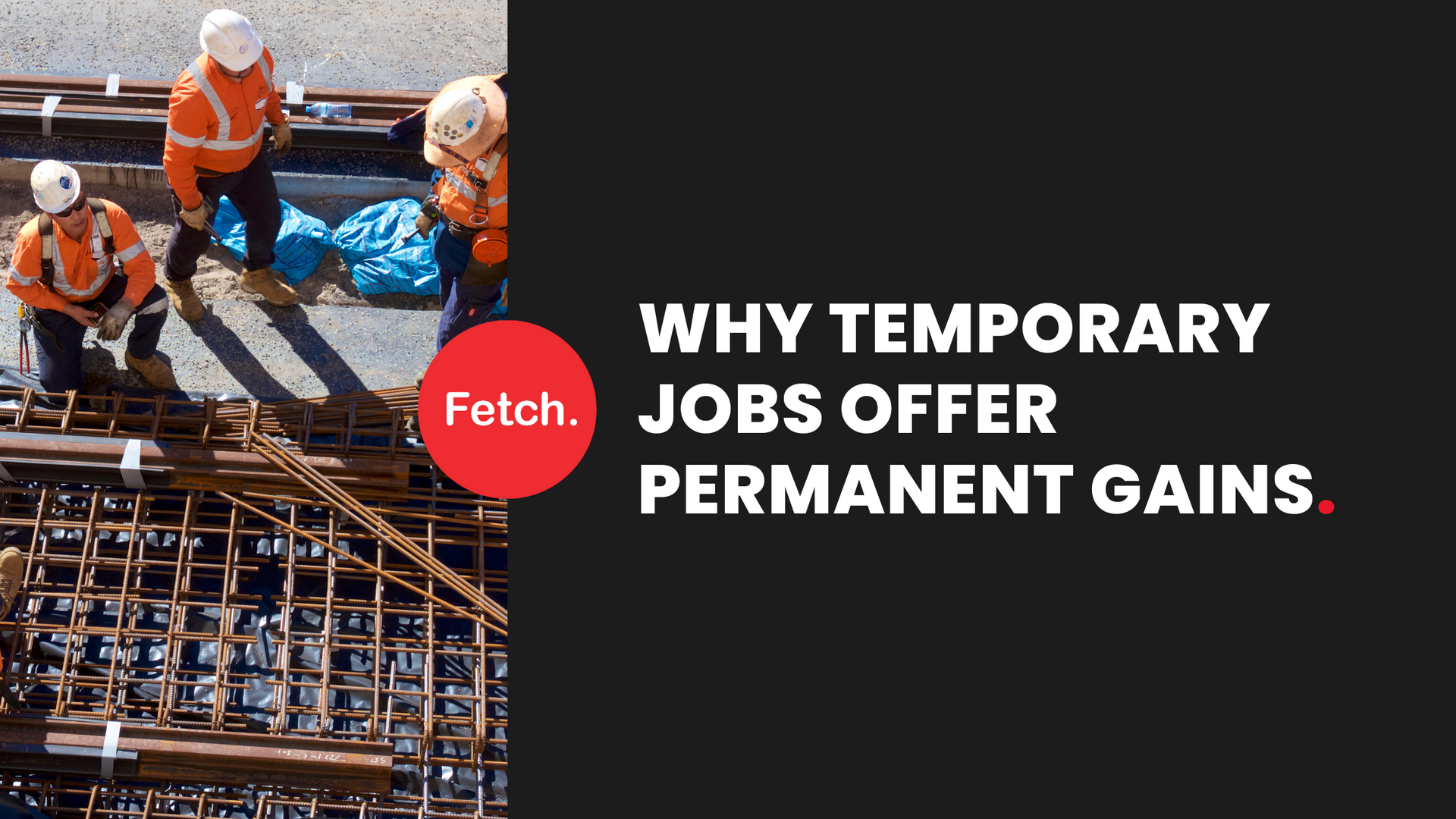
Share This Article
Temporary and contract work is a mainstay in the construction industry and for good reasons. Employers often rely on temporary workers to cover gaps on projects, while individuals – whether they be tradies, labourers, project managers or site supervisors – opt for temp roles to suit their personal situation and job preferences.
Although a large proportion of the market considers temporary or contract assignments as undesirable, this way of working can provide a range of benefits that permanent jobs can’t. We’ll explore these benefits in detail.
Gain Diverse Work Experience
Temporary or contract jobs are the ultimate way to gain exposure to a broad range of workplaces, industries and projects. Each project will enable you to build new skills and learn ways to interact with people from diverse backgrounds. Temp roles can also help you identify the direction you want to steer your career in, as you’ll have gained a variety of experiences in a short period of time.
Sharpen Your Skills for Future Construction Jobs
With temporary or contract jobs, you can pick up new methods and approaches to tasks, which can be invaluable for future roles. Gaining exposure to different tools, procedures and software helps build your adaptability and knowledge of what works well and what doesn’t. These attributes are highly valued by employers and are often why organisations like to hire professionals with robust contracting experience.
Attractive Pay Rates
As a contractor or temporary employee, working extended working hours can net you real gains. As you’re paid hourly, you can expect 20% to 30% higher pay compared to full-time roles.
Find Your Ideal Job Match
Beginning a job on a contract basis allows you to evaluate an employer before committing to a permanent relationship. It’s one of the most practical ways to determine which work environment and culture is right for you, without the long-term commitment of a permanent contract.
Take Longer Breaks When You Need To
There may be times in your life when you don’t want to be locked into a permanent job. You might have plans for that long overseas trip of a lifetime, or a move interstate, or to learn a new skill. These priorities can conflict with the commitment you’re expected to make when employed in a permanent role. Working temp jobs can free you from this commitment and map out your timeline on your own terms.
Manage a Side Hustle
If you’re interested in entrepreneurship, temporary jobs can give you the freedom to develop a new business while maintaining income. Taking on project-based work or jobs with flexible hours can give you the space needed to earn a second stream of income and lay the groundwork for a side venture.
Expand Your Professional Network
The laws of probability apply to careers just as they apply to other areas of life. As temporary work often brings you into contact with more people, it can also expand the number of job opportunities you’re likely to encounter.
Even if meeting more people doesn’t immediately translate into job offers, consider the experience as an investment in your future. You never know when someone from your network might reach out with a promising opportunity.
Find Entry Level Construction Jobs
In the initial stages of your career, temporary jobs are the easiest way to get your foot in the door with smaller builders. If you’re new to construction, temporary project-based work will fast-track your skills and confidence, as it encourages you to adapt to new environments quickly. As a junior, this is an excellent way to discover what you’re capable of and what career path you want to pursue in the long term.
Summary
Beyond just filling gaps, temporary and contract construction jobs offer major advantages that permanent roles are often missing.
Embrace temporary roles not just as jobs but as investments in your career over the long-term, where each assignment gives you more skills and options to make your next move.
If you’re ready to start a contract job or just want to know more about the roles currently available, contact us today and speak to one of our friendly and knowledgeable recruitment consultants.


